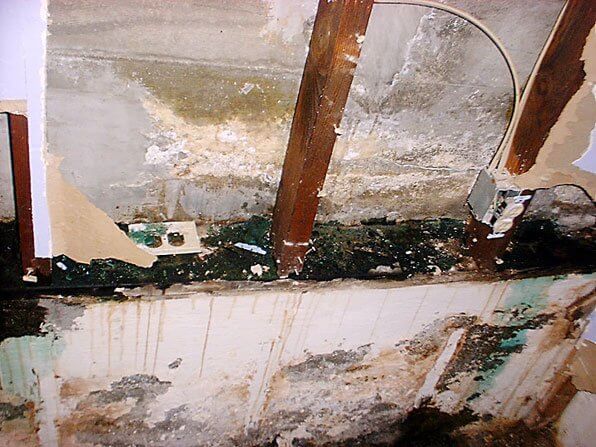Home Inspection 101 Inside The Inspectors Head : Types of Water Damage
Featured Blog Post Written By Aaron Borsch from A Buyer’s Choice Home Inspections

The last blog I spoke on structure and various issues that arise.
Now I can speak more on water damage, something people always have a concern about.
Types of Water Damage
Wood Rot
When people think of water damage, they think of the obvious, wood rot. Indeed that is the main common form it takes on.
Wood does not rot the instant it comes in contact with water. If wood is allowed air, and proper time to dry, rot generally does not occur. This is true of wood roofing shingles.
However if wood remains wet, and cannot dry, it will begin to rot. Common areas of rot typically are exterior wood members. Very commonly I see it on decks. One thing to understand about decks is they are always exposed to the weather, so its very common to see deterioration there.
As with anything that is rotted, the only real way to remedy it is to replace the rotted areas. I have seen where some try and repaint the rotted wood. While this may protect it for a small amount of time to rotting more, the structural integrity of the wood has already been compromised. Depending on what and where it is, it may still need replacement.
Wood also acts sort of like a sponge for moisture. Where this appears the most is when wood is in contact with the ground. For wood posts in contact with dirt, typically they will rot at the base, as moisture is wicked up from the soil surface.
Inside a house, a wood frame typically has a barrier between the concrete and the wood, to prevent direct contact between the two materials. This is because this same capillary action can also draw moisture, right through the concrete, and into the wood.
Drywall
Rot on structural wood is always going to be a high concern. Specific areas that are prone roof framing, or sill plates. Either can have significant structural effect if severely damaged.
Rot is not the only thing moisture can damage. Drywall also does not take water well. When drywall gets wet, it can turn to a mud, and can start to sag.
As with anything that takes water damage, it can only be replaced.
Mould
The final by product of water damage is mould.
I will write more about mould at a later date, but something to understand is it can only take 16 hours of constant moisture contact for mould to form. Also, the effect of mould is different to each individual. Some, it does not have any effect, others it can have a heavy effect.
You can try cleaning mould, but typically it will still stain if its severe enough. Most restoration companies will replace areas that have been affected with mould.
Structural Penetration
Water functions with gravity, and always flows downwards. From the exterior, the drainage on the exterior is one of the most important features on keeping water outside of the house.
What this means, is water has to drain away from the house and structure. If the ground is angled towards our house, you can bet water will also flow that way. Water that contacts an area consistently enough, eventually makes its way through. This includes concrete.
The best defense against this is to make sure all the areas near your house perimeter will direct water away from the house, or has some sort of drain system that will allow the water not to consistently impact the foundation.
Detection
I get asked a lot about markings or imperfections on ceilings if I think its water damage.
For water leaks and such, one thing to note is they usually leave a certain pattern. They will generally be rough circles, or lines that appear to run along a path. They also generally leave a yellowish stain, as that is the colour on drywall after the water dries.
–
In conclusion, this blog is a bit shorter because its very difficult to quantify every single moment that may occur when moisture damage is at risk. One thing that happens more though is that the longer the source of damage occurs, typically the more expensive it is to fix, as the water continues to damage the surrounding area.
Next Time
Next blog I will speak on Water Lines



